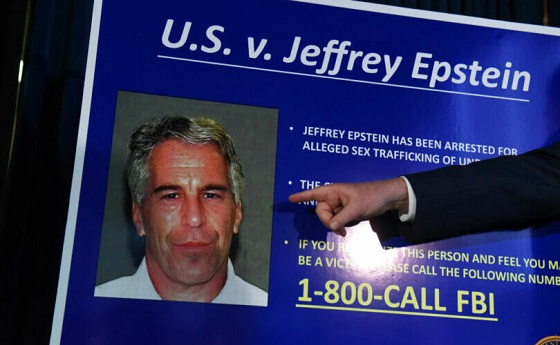National
CBSA Union president – ArriveCan wasn’t needed
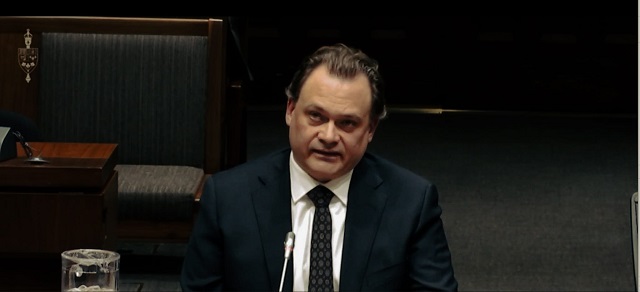
PACP’s Meeting No. 105 sheds light on the profound inefficiencies plaguing the Trudeau administration, as Mark Weber testifies on the ArriveCan’s failures and the cultural rot within the CBSA
In the latest episode of the ongoing saga that encapsulates the depth of dysfunction under the Trudeau administration, Meeting No. 105 of the PACP – Standing Committee on Public Accounts unfolded in what can only be described as a monumental barn burner. The spotlight shone intensely on Mark Weber, the resolute President of the Customs and Immigration Union, who took the stand to expose the underbelly of inefficiency and mismanagement festering with the ArriveCan from the perspective from his members on the ground.
In a testament to the burgeoning controversy, Weber’s testimony sliced through the facade of bureaucratic efficiency, laying bare the consequences of a government more concerned with image than substance. The ArriveCan debacle, with its spiraling $60 million expenditure, stands as a glaring symbol of the Trudeaus approach: reckless spending which is severely lacking accountability.
The session was a spectacle of irony and disarray that bordered on the comedic, as the theater of government dysfunction unfolded before our very eyes. Amidst the turmoil, Liberal MP Brenda Shanahan stood up, emblematic of the coalition’s unwavering detachment from reality, posing the question to Mark Weber:
“Can you please tell us what you have heard from your union members in terms of how ARRIVE can provide efficiencies to the previous paper-based system?”
Before diving into Weber’s response, it’s crucial to note the backdrop against which this farce was set. Here we had the Liberal party, clinging with desperate fingers to the thin reed of “efficiency,” as if this single word could magically overshadow the colossal sum of $60 million funneled into the abyss for an app that, as it turns out, was about as necessary as a screen door on a submarine.
Mark Weber’s response was as pointed as it was illuminating, a stark contrast to the fluff and bluster we’ve come to expect from the powers that be.
“In terms of the information that we needed for our purposes for customs officers, really all we needed was to be able to verify that the person was vaccinated, which everyone was able to do simply by showing us their vaccination on their phone or a printed-out copy.”
There it was, the moment of truth – the revelation that the taxpayer, the everyday Canadian, had been bilked out of $60 million for a redundant app, an app that wasn’t even a requirement in the practical conduct of our border security.
Weber then laid bare the operational fiasco that was the app’s implementation. The hours squandered on the ground, the bureaucratic hoops jumped through for information that seemed to serve no one, certainly not the Canadian public.
“It seemed like we were spending our time collecting information for others that in large part we don’t know or don’t think was used,”
he dissected mercilessly. And then came the kicker, the detail that should make every Canadian’s blood boil:
“As far as I know, no one verified where anyone was staying. You know, the hundreds of hours that our officers spent helping people collect this information at the border we don’t believe was really used at all.”
Mark was probed about another critical aspect: the training—or lack thereof—that his union members received on the proper use of the ArriveCan app. With a shake of his head, Mark’s response was disheartening but unsurprising. The training was minimal, leaving border guards underprepared and travelers equally bewildered. This lack of instruction exacerbated an already tense situation, pitting frustrated travelers against equally frustrated border personnel, a recipe for chaos and inefficiency at our nation’s gateways.
Mark didn’t stop there. He acknowledged that while technology can be a powerful ally, it is not a panacea for all woes. He underscored a fundamental truth: an app is merely a tool, and like all tools, its effectiveness is contingent upon the skill and expertise of those wielding it. In the realm of national security and border control, this means boots on the ground—trained, knowledgeable personnel ready to act. Mark stressed that despite the high hopes pegged on technological advancements like automated passport checkouts, these innovations have not significantly reduced wait times at airports. The anticipated streamline and efficiency, much vaunted by proponents of the app, have yet to materialize in any tangible form.
This situation leaves us with a glaring juxtaposition: on one side, a government heralding the dawn of a new, tech-savvy era in border management; on the other, the stark reality of frontline workers grappling with underpreparedness and ineffective tools. The mismatch between the glittering ideal and the gritty reality underscores a profound disconnect.
Mark painted a picture of an organization beset by inefficiency and bureaucratic bloat. He described a surreal scenario where the hierarchy was so top-heavy that there were instances of four superintendents tasked with supervising merely two employees. This, he argued, was indicative of a toxic culture that not only hampered operational effectiveness but also left little room for accountability.
More alarmingly, Mark highlighted a significant gap in the organization’s framework: the lack of whistleblower protection. This absence of safeguards for those willing to speak out against malpractices further entrenched the culture of silence and complicity, stifling any potential for reform or improvement from within.
In response to these criticisms, the Liberals and NDP, now bound in a coalition, deflected by invoking the specter of the Harper era, suggesting that the policies instituted during his tenure continued to cast a long shadow over the CBSA. However, this attempt to pivot away from current issues falls flat. The reality is, with the power and mandate to govern, the coalition could have engaged with the union or the CBSA long ago to address and reverse any contentious Harper-era policies. Yet, they chose inaction.
My fellow Canadians, as we close this chapter, let’s reflect on a critical issue that has metastasized within our public institutions—a malignancy that threatens the very integrity of our governance: the lack of whistleblower protection.
This deficiency, a silent but deadly cancer, undermines the moral and operational foundation of our services. When our dedicated public servants, those tasked with safeguarding the public good, stand muted, crippled by the fear of reprisal, we face a grave crisis. How can we expect improvement or rectitude within our systems if those witnessing wrongdoings remain shackled by fear? A system that stifles the courageous voices calling out corruption or malpractice is a system that has failed its people.
Consider the case of Luc Sabourin, a former employee of the CBSA. His experience is a stark illustration of this systemic failure. Sabourin spoke out, did his civic duty by reporting wrongdoing within his organization. But what reward did his honesty fetch? Bullying, ostracization, and a clear message: silence is safer than integrity. This is the dire consequence of a system that fails to shield its truth-tellers.
This, my fellow Canadians, is unacceptable. It’s high time we demand more than just superficial changes and empty promises from the Liberals and the NDP. Mere band-aid solutions and deflections to past administrations will not heal the deep-seated issues within our governance. The controversies swirling around instruments like ArriveCan and the toxic culture within the CBSA demand rigorous scrutiny, not mere sidestepping or finger-pointing. The swamp of corruption and malaise within our government requires draining, not mere change of guards or partisan rhetoric. Pierre Poilievre and his team, along with every conscientious lawmaker and citizen, must grab their metaphorical shovels. It’s time to excavate the entrenched bog of mismanagement and cleanse the festering wound of corruption that plagues our country.
Let this be a call to action: a plea for transparency, accountability, and genuine reform. For the health of our democracy, for the integrity of our institutions, and for the well-being of every Canadian, the time to act is now. Let’s unite in this critical endeavor to rejuvenate our system, to transform it into one that truly serves, protects, and represents us all.
For the full experience subscribe to The Opposition with Dan Knight .
Business
103 Conflicts and Counting Unprecedented Ethics Web of Prime Minister Mark Carney
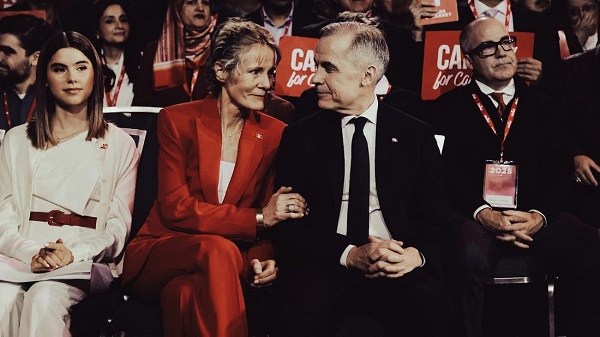

 Dan Knight
Dan Knight
Brookfield. The PMO. Eurasia Group. One Green Agenda, Billions in Conflicts.
Well, it finally happened. After months of dodging questions and hiding behind vague platitudes about “climate leadership,” Prime Minister Mark Carney’s official conflict-of-interest screen has been released by the Ethics Commissioner—and what it reveals is nothing short of staggering. Not five entities. Not a dozen. One hundred and three. That’s how many corporate and financial interests Carney has quietly acknowledged are too conflicted for him to touch.
At the center of this web? Brookfield Asset Management, the $1 trillion global investment firm where Carney was Vice-Chair before walking straight into Canada’s top political office. The very same Brookfield that owns energy projects, pipelines, nuclear companies, real estate empires, carbon offset schemes you name it, they’ve got a piece of it. And now, they’ve got a former executive running the country.
We’re told it’s all perfectly legal. We’re told Carney has “recused himself.” But what this disclosure actually shows is something much bigger: a government captured by finance, a prime minister with deep, ongoing entanglements in the very sectors his policies now enrich, and a climate agenda that’s beginning to look a whole lot like a money-printing operation for the global elite.
The deeper one digs into Prime Minister Mark Carney’s ethics disclosure, the clearer the picture becomes: what’s been framed as a climate leadership story is, in reality, a tightly wound web of commercial interest wrapped in green rhetoric. The 103-entity conflict-of-interest screen, ostensibly a shield against impropriety, instead serves as a road map of how thoroughly Canada’s top political office is entangled in the global green finance complex centered around Brookfield Asset Management.
As of Q1 2025, Brookfield reports $125 billion in assets under management (AUM) in its Renewable Power & Transition segment, a figure representing 12.5% of its overall $1 trillion portfolio. This segment alone encompasses most of the entities on Carney’s ethics screen: nearly 60 out of 103, even after accounting for duplicates. These aren’t passive holdings they’re the very projects, technologies, and subsidy-eligible vehicles Carney once oversaw directly as vice-chair of Brookfield and as co-lead of its $15 billion Global Transition Fund.
Brookfield’s renewables portfolio is vast: over 41.8 GW in installed capacity globally across wind, solar, hydro, and storage, with a 200+ GW development pipeline. A significant portion of this is owned or operated through the same SPVs and subsidiaries now appearing on the conflict list. Notable entries include Scout Clean Energy ($1B), Urban Grid ($650M), and Standard Solar ($540M). These acquisitions were all completed while Carney was at Brookfield, and they continue to generate revenue from U.S. and Canadian subsidy frameworks programs now shaped by the very government he leads.
Brookfield Renewable Partners L.P., the sector flagship, holds approximately $95 billion in total assets and generated $315 million in funds from operations in Q1 2025 alone. The firm is planning to add another 8 GW in capacity this year expansion that is, in part, subsidized through the same green transition policies Carney has promoted both in office and as a climate finance advocate.
The line between public and private interest blurs even further when examining the entities categorized under the “energy transition” banner; nuclear, CCS (carbon capture and storage), and so-called e-fuels. Carney’s screen includes Brookfield’s recent $8 billion acquisition of Westinghouse Electric Company, a nuclear power behemoth now positioned to benefit from Canada’s federal nuclear incentives and SMR (small modular reactor) program. Other flagged investments like Entropy and Carbon TerraVault fall directly into carbon credit and offset schemes—markets heavily influenced by federal regulation and incentive design.
Let’s stop pretending. What we’re witnessing here isn’t just conflict of interest, it’s a complete merger of state power and corporate ambition, all dressed up in the language of moral urgency. The Ethics Commissioner’s so-called “screen” for Mark Carney? It’s a joke. A checklist. A bureaucratic fig leaf meant to reassure you that everything’s above board. But it’s not.
Because here’s the truth: Carney is policing himself. He’s supposed to recuse himself from decisions that benefit the 103 entities he’s tied to many of which he helped create or oversee as Vice-Chair of Brookfield Asset Management. But who decides if he’s in conflict? He does. Or more accurately, the PMO does. The same PMO now drafting Dominion Barton-style focus groups to figure out how best to sell you the green grift. There’s no third-party oversight, no transparency on what’s actually in his so-called blind trust, and no disclosure of the carried interest he may still be entitled to from Brookfield’s billions in funds.
Meanwhile, the policy levers of government are being pulled in exactly the direction Brookfield bet on. Wind, solar, carbon capture, nuclear, every so-called “transition” sector that Brookfield spent years buying into is now flush with green subsidies, ESG guarantees, and taxpayer-backed investment shields. This isn’t the free market at work, it’s a strategic payoff, engineered by someone who’s now running one of the most powerful G7 economies.
And again, none of it is illegal. That’s the most damning part. Because legality isn’t the standard here. The standard is integrity, and that’s nowhere to be found. The scale of this overlap isn’t just large. It’s systemic. It’s built into the very foundation of the Carney government’s climate policy. The same man who structured these funds is now the man signing off on the policies that make them profitable.
Diana Fox Carney’s Quiet Role in the Climate Cash Machine
And just when you thought the web of influence stopped at the Prime Minister himself, along comes Diana Fox Carney, economist, climate consultant, and spouse of the most well-connected man in Canadian politics. While Mark Carney’s direct financial entanglements with Brookfield Asset Management are now public record, his wife’s career trajectory paints an equally troubling picture of how the same elite networks driving Canada’s green spending are profiting in parallel, behind the curtain.
Diana Fox Carney currently holds a senior advisory role at Eurasia Group, the New York-based geopolitical risk consultancy that’s become a quiet powerhouse in shaping global ESG narratives. It’s also the same firm where Gerald Butts—Trudeau’s longtime fixer and architect of the federal climate playbook—now serves as vice chair. Add in former journalist Evan Solomon and even Conservative stalwart John Baird, and you’ve got a bipartisan consultancy stacked with Canadian political operators. Convenient? Maybe. Coordinated? You decide.
And what has this firm staffed with Liberal-era insiders received in return? Millions in untendered government contracts, including a $446,210 deal from Natural Resources Canada in 2024 for vaguely defined “geopolitical research.” That’s nearly half a million dollars in taxpayer money handed out without competition, to a firm employing the sitting Prime Minister’s wife—and his former colleagues. Just coincidence, right?
But Eurasia Group is only the start. Diana’s reach extends far beyond advisory calls. She’s connected to:
- BeyondNetZero, a climate equity fund backed by U.S. private capital giant General Atlantic.
- Helios CLEAR, investing in African climate “resilience.”
- ClientEarth U.S. and the Shell Foundation, both pushing aggressive environmental litigation and policy influence.
- Canada 2020, a Trudeau-aligned think tank that’s pocketed over $1 million in federal grants.
Throw in indirect ties to Gates Foundation funding, Save the Children, and research networks influencing African agriculture, and you’re looking at a network of transnational climate consultants with deep, ongoing influence over the exact climate policies the federal government is now implementing under her husband’s leadership.
Now, legally, Diana is in the clear. She’s not a public office holder. But that’s the point. The rules weren’t designed for this new class of political operator—the dual-career globalist power couple, where one side signs the climate cheques while the other cashes them. No formal disclosure is required. No recusals. No transparency. Yet the influence is there. The access is there. The money is flowing.
Opposition Reaction: Pierre Poilievre Slams Carney’s Hidden Conflicts, Demands Real Transparency
Conservative Leader Pierre Poilievre wasted no time responding to the bombshell ethics screen showing Prime Minister Mark Carney is recusing himself from dealings with over 100 companies, many tied to his former employer, Brookfield Asset Management. In a pair of direct and widely shared posts, Poilievre accused Carney of concealing critical financial entanglements from voters during the 2025 election, and warned that the Liberal leader is now either positioned to profit from federal decisions or paralyzed from making them.
“Mark Carney must explain why he kept these conflicts secret from voters until after the election,” Poilievre wrote. “Now he will be in a position to profit from big decisions or will be forced to sit out those decisions altogether. Either way, Canadians will pay the price.”
In a second post earlier that morning, Poilievre challenged the credibility of Carney’s so-called blind trust, urging the Prime Minister to liquidate his holdings entirely and hand the cash to a trustee who can invest it without Carney’s knowledge or influence:
“Otherwise, he will always know how political decisions can affect his personal wealth.”
These statements mark the strongest opposition rebuke yet of the Carney government’s financial entanglements. Poilievre’s message echoes growing public criticism that the ethics screen is little more than window dressing, lacking third-party oversight, and that it fails to address indirect benefit through carried interest, deferred compensation, or spousal affiliations.
While Carney has claimed he is in full compliance with federal ethics laws, the fact that the disclosures were released only after the election is fueling outrage—not just among Conservatives but from broader accountability watchdogs. With over 100 entities flagged, many of them tied to green energy, infrastructure, and climate finance—the same sectors receiving billions in federal spending—the Conservative leader has positioned himself as the voice of those demanding a full forensic audit of the Prime Minister’s interests.
The message from the opposition is clear: if this were a Conservative leader, the media would be calling it a scandal. But because it’s Carney—the global banker, the climate envoy, the Liberal savior—the establishment is looking the other way. Poilievre’s Conservatives aren’t. And they’re turning this into a defining issue of integrity and accountability in Canadian politics.
Let’s Call This What It Is
This isn’t subtle. This isn’t nuanced. This is what a grift looks like—on paper, in public, in black and white. Over one hundred conflicts of interest tied directly to Mark Carney. Entire portfolios of foreign and domestic holdings, billions in green investments, shell companies in Bermuda—and that’s before we even get to his wife’s global consultancy work, advising firms that quietly gobble up federal contracts without a single public tender.
And here’s the thing: we weren’t told any of this during the election. There was no press conference, no headline, no public vetting of the sprawling web of corporate and climate interests now tied to the highest office in the country. Why? Because it would have compromised the Liberal grip on power. Because the last thing this party wanted Canadians to know was that their new leader wasn’t just a banker—but a banker with a boardroom’s worth of financial strings still attached.
Now imagine—just for a moment—if it had been Pierre Poilievre. Or Andrew Scheer. Or any Conservative leader with over a hundred screened entities, global finance ties, offshore SPVs, and a spouse employed by a company collecting millions in government money. The press would be in a frenzy. The CBC would be running specials. They’d be calling him compromised, unfit, a foreign agent.
But because it’s their guy—because it’s the Liberal elite’s banker-in-chief—we’re told it’s fine. It’s all above board. Move along, nothing to see here.
Nonsense. Absolute nonsense.
This is not leadership. This is ideological grifting at the highest level. The Liberal Party, once the party of national unity and democratic accountability, has become a hollowed-out machine for elite interests. They’re not liberals. They’re grifters—grifting for green subsidies, globalist contracts, and personal access to power. They have no principle left. Just consultants, contracts, and a taxpayer-funded narrative to keep the game going.
Enough. Canadians didn’t vote for this. They weren’t told the truth. And now the entire climate agenda, the whole “just transition,” looks more like a get-rich scheme for the political class than any serious public mission.
It’s time for an election. Time to clear house. Time to drain this toxic, green-glossed swamp once and for all.
Subscribe to The Opposition with Dan Knight
Invite your friends and earn rewards
Business
Most Canadians say retaliatory tariffs on American goods contribute to raising the price of essential goods at home

- 77 per cent say Canada’s tariffs on U.S. products increase the price of consumer goods
- 72 per cent say that their current tax bill hurts their standard of living
A new MEI-Ipsos poll published this morning reveals a clear disconnect between Ottawa’s high-tax, high-spending approach and Canadians’ level of satisfaction.
“Canadians are not on board with Ottawa’s fiscal path,” says Samantha Dagres, communications manager at the MEI. “From housing to trade policy, Canadians feel they’re being squeezed by a government that is increasingly an impediment to their standard of living.”
More than half of Canadians (54 per cent) say Ottawa is spending too much, while only six per cent think it is spending too little.
A majority (54 per cent) also do not believe federal dollars are being effectively allocated to address Canada’s most important issues, and a similar proportion (55 per cent) are dissatisfied with the transparency and accountability in the government’s spending practices.
As for their own tax bills, Canadians are equally skeptical. Two-thirds (67 per cent) say they pay too much income tax, and about half say they do not receive good value in return.
Provincial governments fared even worse. A majority of Canadians say they receive poor value for the taxes they pay provincially. In Quebec, nearly two-thirds (64 per cent) of respondents say they are not getting their money’s worth from the provincial government.
Not coincidentally, Quebecers face the highest marginal tax rates in North America.
On the question of Canada’s response to the U.S. trade dispute, nearly eight in 10 Canadians (77 per cent) agree that Ottawa’s retaliatory tariffs on American products are driving up the cost of everyday goods.
“Canadians understand that tariffs are just another form of taxation, and that they are the ones footing the bill for any political posturing,” adds Ms. Dagres. “Ottawa should favour unilateral tariff reduction and increased trade with other nations, as opposed to retaliatory tariffs that heap more costs onto Canadian consumers and businesses.”
On the issue of housing, 74 per cent of respondents believe that taxes on new construction contribute directly to unaffordability.
All of this dissatisfaction culminates in 72 per cent of Canadians saying their overall tax burden is reducing their standard of living.
“Taxpayers are not just ATMs for government – and if they are going to pay such exorbitant taxes, you’d think the least they could expect is good service in return,” says Ms. Dagres. “Canadians are increasingly distrustful of a government that believes every problem can be solved with higher taxes.”
A sample of 1,020 Canadians 18 years of age and older was polled between June 17 and 23, 2025. The results are accurate to within ± 3.8 percentage points, 19 times out of 20.
The results of the MEI-Ipsos poll are available here.
* * *
The MEI is an independent public policy think tank with offices in Montreal, Ottawa, and Calgary. Through its publications, media appearances, and advisory services to policymakers, the MEI stimulates public policy debate and reforms based on sound economics and entrepreneurship.
-

 COVID-1910 hours ago
COVID-1910 hours agoFDA requires new warning on mRNA COVID shots due to heart damage in young men
-
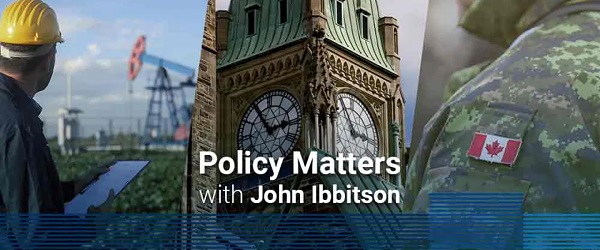
 Business8 hours ago
Business8 hours agoCarney’s new agenda faces old Canadian problems
-

 Indigenous9 hours ago
Indigenous9 hours agoInternal emails show Canadian gov’t doubted ‘mass graves’ narrative but went along with it
-

 Daily Caller5 hours ago
Daily Caller5 hours agoBlackouts Coming If America Continues With Biden-Era Green Frenzy, Trump Admin Warns
-

 Bruce Dowbiggin11 hours ago
Bruce Dowbiggin11 hours agoEau Canada! Join Us In An Inclusive New National Anthem
-

 Alberta2 days ago
Alberta2 days agoAlberta school boards required to meet new standards for school library materials with regard to sexual content
-
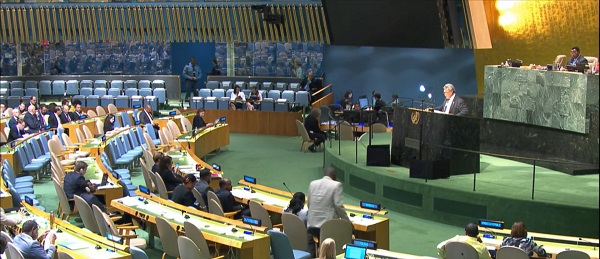
 Business2 days ago
Business2 days agoUN’s ‘Plastics Treaty’ Sports A Junk Science Wrapper
-

 Environment2 days ago
Environment2 days agoEPA releases report on chemtrails, climate manipulation



